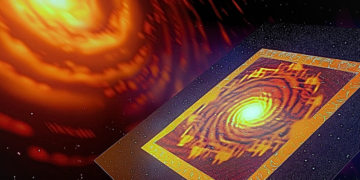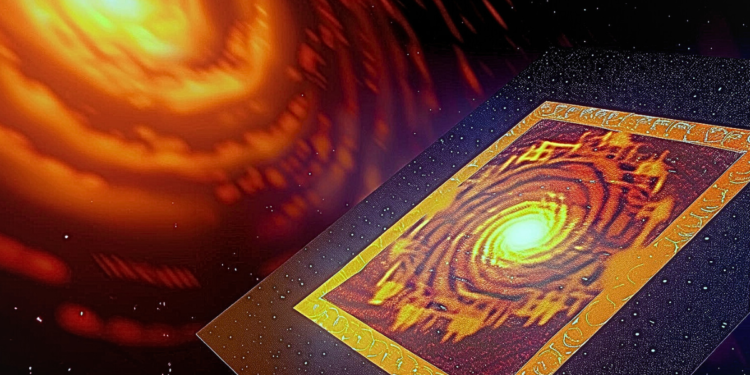A revolutionary leap in camera technology has opened a celestial treasure chest for astronomers – a 400,000-pixel superconducting camera. This innovation shatters previous limitations and promises to revolutionize our ability to observe the cosmos, particularly faint celestial objects like distant stars and elusive exoplanets.

The Relentless Quest for Faint Starlight: A Historical Roadblock
Astronomy, at its core, is a detective game – piecing together the grand narrative of our universe from the faint whispers of light emitted by distant objects. However, traditional cameras struggle with a significant adversary – noise. This inherent noise acts like static on a radio, corrupting the delicate signals astronomers painstakingly collect. Here’s where superconducting cameras enter the scene, boasting exceptional low-noise operation. By operating at incredibly low temperatures and leveraging their unique composition, these cameras act like highly sensitive light detectors, registering even the arrival of single photons – the fundamental building blocks of light.
The Pixel Bottleneck: A Hurdle Overcome
While offering unparalleled sensitivity, traditional superconducting cameras have been restricted by their size, typically limited to a few thousand pixels. This constraint acted as a bottleneck, hindering their ability to capture high-resolution images – crucial for astronomers studying the intricate details of celestial objects. Imagine trying to discern the delicate features of a butterfly with a blurry, low-resolution photograph.
A 400,000-Pixel Leap: Shattering Barriers and Illuminating New Possibilities
A team of researchers has heroically shattered this barrier by creating a 400,000-pixel superconducting camera. This signifies a monumental leap forward, enabling astronomers to not only capture faint astronomical signals but to do so with an unprecedented level of detail. This advancement unlocks the potential to detect faint astronomical signals across a broad spectrum of light, from the ultraviolet to the infrared wavelengths, encompassing a vast swathe of the electromagnetic spectrum.
Time-Domain Multiplexing: The Secret Weapon for High-Density Pixels
The secret weapon behind this breakthrough lies in a technique called time-domain multiplexing. This ingenious method allows the camera to efficiently encode information from a large number of pixels using just a few readout wires. Imagine a massive switchboard with thousands of incoming wires. Time-domain multiplexing acts like a sophisticated router, efficiently managing the flow of information with a significantly reduced number of wires. This eliminates the need for bulky wiring configurations, paving the way for a high-density pixel design, akin to packing millions of transistors onto a modern computer chip.
Beyond the Astronomical Frontier: A Universe of Applications
The applications of this innovative camera extend far beyond the astronomical frontier. Here are a few exciting possibilities that beckon on the horizon:
- Exoplanet Hunters Rejoice: Unveiling Hidden Worlds – The exceptional sensitivity of this camera can be instrumental in the long-standing quest for Earth-like exoplanets. By meticulously monitoring distant stars for even the slightest dimming, astronomers can detect the minuscule dips in starlight caused by a planet transiting its host star. This cosmic game of hide-and-seek, played out across unimaginable distances, could yield groundbreaking discoveries about the potential for life beyond our solar system. Imagine peering into the depths of space and not only detecting a distant planet, but also discerning details about its atmosphere, hinting at the possibility of life-sustaining conditions.
- Deep Space Communication: Breaking Through the Interstellar Barrier – These cameras can play a vital role in NASA’s Deep Space Optical Communications (DSOC) project. By harnessing the power of light, DSOC aims to achieve significantly faster data transmission rates compared to traditional radio waves, enabling a more efficient flow of information from deep space missions. This advancement paves the way for a future where scientists can receive real-time data and high-resolution images from distant spacecraft, revolutionizing our understanding of the cosmos. Imagine receiving detailed data from a mission on Mars within minutes, instead of hours or days, allowing for faster scientific progress and a deeper connection to distant worlds.
- Biomedical Imaging: Unveiling the Mysteries Within – The camera’s ability to detect faint signals holds immense promise for the field of biomedical imaging. It has the potential to revolutionize our ability to study cellular and molecular activity within living organisms, potentially leading to the detection of previously undetectable biomarkers for disease. This could lead to earlier diagnoses, more targeted treatments, and a deeper understanding of the fundamental processes underlying human health. Imagine being able to detect the earliest signs of disease on a cellular level, allowing for preventative measures and personalized treatment plans.
- Quantum Technologies: A Catalyst for Innovation – This technology aligns perfectly with the burgeoning field of quantum computing and communication. The camera’s single-photon detection capabilities can significantly contribute to advancements in this revolutionary domain. Quantum technologies hold the promise of revolutionizing fields like cryptography, materials science, and drug discovery, and this innovative camera’s single-photon detection capabilities can significantly contribute to advancements in this revolutionary domain. Imagine quantum computers processing information at unprecedented speeds, with the superconducting camera facilitating error correction and enhancing the overall fidelity of quantum operations. Additionally, in quantum communication, where the secure transmission of information relies on detecting single photons, the camera’s sensitivity can provide a substantial boost to the development of unhackable communication networks.

The advent of the 400,000-pixel superconducting camera marks a transformative moment in both astronomical and technological exploration. By overcoming historical barriers and introducing groundbreaking innovations, this camera opens up a universe of possibilities. From unraveling the mysteries of distant exoplanets and enhancing deep space communication to revolutionizing biomedical imaging and propelling quantum technologies forward, its impact is far-reaching. As we stand on the cusp of this new era, the sky is no longer the limit – it is merely the beginning of a profound journey into the unknown, guided by the pioneering spirit of scientific discovery.



















